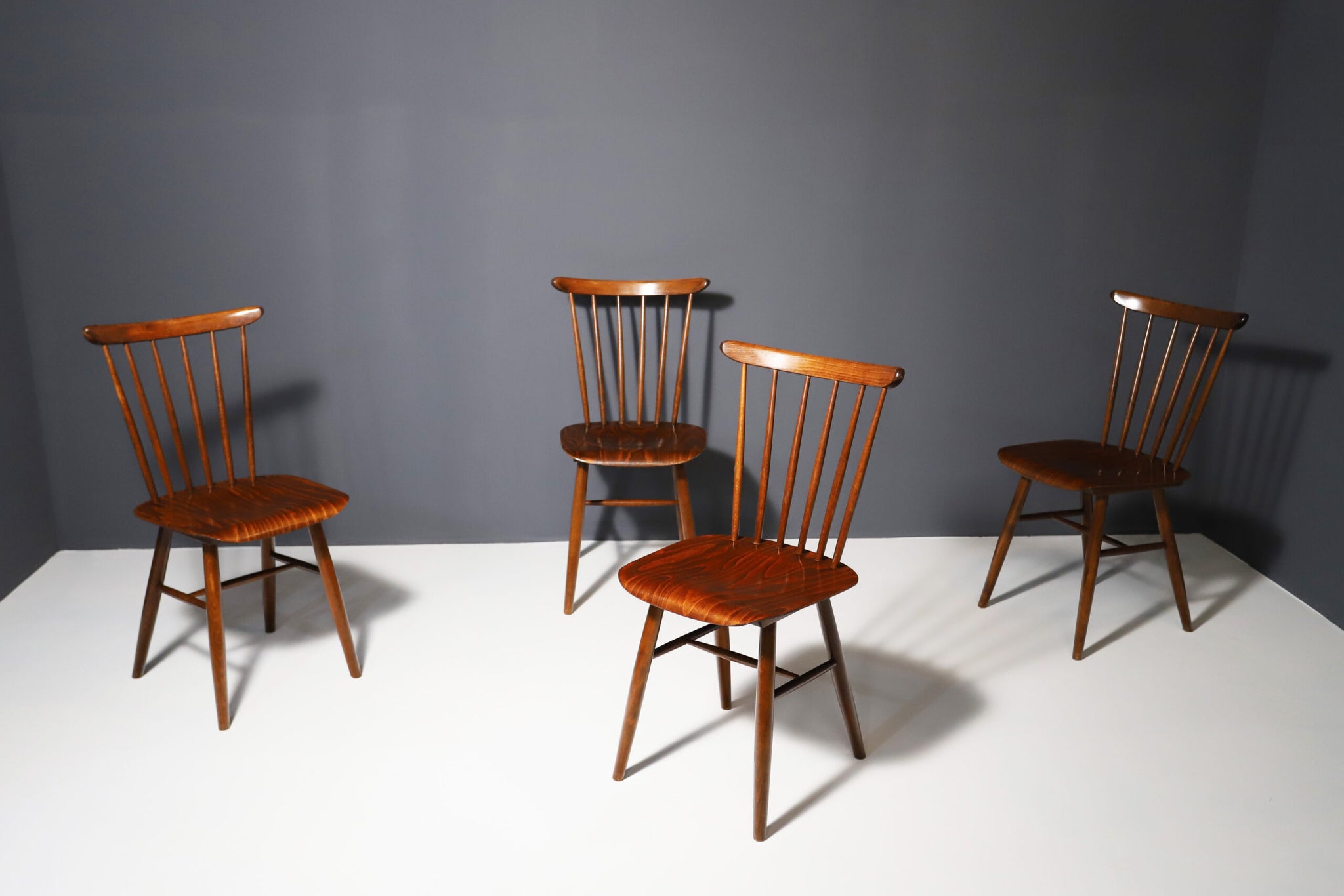🌳 From Thonet to TON: A Century of Bentwood Furniture
✨ Introduction
Bentwood furniture stands as one of the most elegant and enduring legacies in furniture design. Its graceful curves, lightweight construction, and artisanal craftsmanship have captivated generations. From Michael Thonet’s groundbreaking innovations in the 19th century to TON’s modern interpretations in the 21st century, the story of bentwood furniture is one of continuous evolution rooted in tradition.
🛠️ The Innovator: Michael Thonet and His Legacy
Michael Thonet (1796–1871), a German-Austrian cabinet maker, revolutionized furniture making by inventing a process that allowed wood to be steamed, bent, and molded into smooth, flowing shapes without sacrificing strength. His signature No. 14 chair, produced from 1859, featured six pieces of bentwood, making it simple to assemble and remarkably durable. This chair became an icon in cafés across Europe and beyond, popular for its functional design and aesthetic charm.
Thonet’s innovation not only made furniture lighter and more affordable but also laid the foundation for modern mass production. His bentwood method combined industrial efficiency with artisanal quality, enabling widespread accessibility to stylish furniture.
🏭 The Birth and Rise of TON
Founded in 1861 in the Czech lands, TON (Továrna na ohýbaný nábytek, or Bentwood Furniture Factory) took inspiration from Thonet’s methods while developing its own unique designs. Situated in the heart of Europe, TON became synonymous with high-quality bentwood craftsmanship.
Over decades, TON evolved from classic bentwood production to embrace new materials and forms. The company successfully merged tradition with innovation, producing furniture that remains timeless while adapting to contemporary tastes.
🔧 Crafting Bentwood: Techniques and Materials
The heart of bentwood furniture lies in its manufacturing process. Wood, primarily beech, is steamed until pliable, then carefully bent into precise shapes using molds and presses. This technique demands expert skill to ensure each piece retains strength and durability.
Key attributes of bentwood furniture include:
-
🌲 Lightweight Construction: Despite its sturdiness, bentwood pieces are easy to move and handle.
-
🔄 Elegant Curves: The flowing, organic shapes create an aesthetic that’s both functional and visually appealing.
-
🌱 Sustainable Material Use: Utilizing wood efficiently reduces waste compared to other manufacturing methods.
TON’s modern lines often incorporate minimalism and ergonomic principles, marrying beauty with comfort.
🏠 Bentwood Furniture in the Modern Era
Today, bentwood furniture enjoys a resurgence among designers and collectors who appreciate its craftsmanship and historical significance. TON continues to innovate, integrating sustainable sourcing and contemporary design trends.
The versatility of bentwood furniture allows it to complement various interior styles, from classic vintage to sleek modern. Its timeless appeal ensures it remains a coveted element in homes, cafés, and public spaces alike.
🌟 Conclusion
From the pioneering work of Michael Thonet to the ongoing excellence of TON, bentwood furniture tells a story of innovation, artistry, and enduring style. This legacy demonstrates how tradition and modernity can coexist, crafting pieces that are as practical as they are beautiful.

Why Bentwood Furniture Endures
Timeless, sustainable, and versatile, bentwood furniture fits both classic and contemporary interiors with ease.
